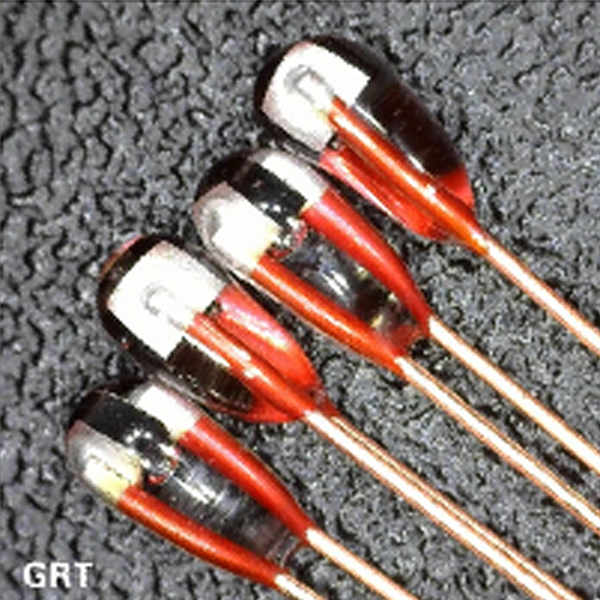1. Introduction
1.1 The Crucial Role of Circuit Protection
In today’s increasingly miniaturized and high-density electronics, safeguarding sensitive circuitry is paramount. Voltage surges, overheating, and inrush currents pose persistent threats that can compromise performance or even permanently damage devices. As devices become more compact and energy-efficient, the demand for intelligent, self-regulating protection components intensifies.
1.2 The Rise of Temperature-Sensitive Components
Among the unsung heroes of circuit reliability are temperature-sensitive components—silent sentinels that monitor thermal conditions in real-time. Of these, NTC thermistor chips stand out. Their simplicity, precision, and responsiveness to temperature changes make them indispensable in both consumer and industrial electronics.
2. What Are NTC Thermistor Chips?
2.1 Defining Negative Temperature Coefficient (NTC) Behavior
An NTC thermistor exhibits a negative temperature coefficient, meaning its electrical resistance decreases exponentially as temperature increases. This inverse relationship forms the core of its protective function—at cooler temperatures, the chip restricts current, but as temperatures rise, it gradually permits more current flow or signals thermal events.
2.2 Construction and Material Science Behind NTC Thermistors
NTC thermistors are typically composed of semiconducting ceramic materials such as manganese, cobalt, or nickel oxides, sintered into precise geometries. These oxides are chosen for their predictable resistivity-temperature characteristics. The chips are then encapsulated in glass or epoxy for environmental resistance, with configurations ranging from disk types to bead and surface-mount forms.
3. The Science of Temperature Sensitivity
3.1 How Resistance Changes with Temperature
The resistance R of an NTC thermistor follows the Steinhart–Hart equation or a simpler exponential model involving a material-specific B-value. A small change in temperature can induce a significant change in resistance, allowing the chip to act quickly in detecting thermal anomalies.
3.2 Thermal Time Constant and Its Implications
The thermal time constant—the time it takes for a thermistor to respond to a step change in temperature—is a crucial metric. Faster responses equate to more reliable circuit protection. In compact applications such as lithium battery packs, even milliseconds of delay can make the difference between safe operation and catastrophic failure.
4. NTC Thermistors as Circuit Protectors
4.1 Current Inrush Limiting in Power Supplies
NTC thermistors are often placed in series at the input stage of power supplies. When powered on, their high initial resistance limits the inrush current surge. As the thermistor heats up, its resistance drops, allowing normal current flow—an elegant, passive form of protection without active switching.
4.2 Overtemperature Detection and Shutdown Applications
Embedded in thermal zones, NTC chips monitor the ambient or component temperature. If an overheating condition is detected, the thermistor can trigger a logic signal to shut down the system, activate a cooling fan, or initiate thermal throttling protocols in CPUs or GPUs.
4.3 Preventing Thermal Runaway in Batteries and Motors
In lithium-ion batteries and brushless motors, thermal runaway is a known hazard. Strategically placed NTC thermistors detect early signs of heat accumulation, enabling prompt response before internal damage escalates.
NTC thermistor chip manufacturer in China
5. Application Scenarios in Electronics
5.1 Consumer Electronics and Smart Devices
NTC chips are prevalent in smartphones, tablets, and wearables, where thermal management is crucial due to confined spaces. They regulate charging circuits, monitor battery health, and ensure user safety during fast-charging or prolonged use.
5.2 Automotive Electronics and EV Battery Systems
In the automotive sector, NTC thermistors are embedded in engine control units (ECUs) and battery management systems (BMS). They help modulate cooling systems, detect overheating in IGBTs, and optimize charging curves based on ambient and cell temperature.
5.3 Industrial Automation and Power Distribution Units (PDUs)
Heavy-duty equipment relies on NTC thermistors for continuous thermal surveillance. In PDUs, they provide early warnings against overload or environmental heating, ensuring stable operation of mission-critical infrastructure.
6. Advantages Over Traditional Protection Methods
6.1 Compact Size and Integration Ease
Unlike bulky relays or fuses, NTC thermistors are microscopic and lightweight, making them ideal for high-density PCBs and embedded systems. Their SMD variants allow automated placement during board assembly.
6.2 Passive Operation and Reliability
No external power or control logic is required. NTC thermistors operate purely based on thermal stimuli, making them inherently fail-safe and extremely reliable under long-term use.
6.3 Cost-Effectiveness for Mass Production
Their low manufacturing cost, especially in ceramic chip form, allows designers to integrate multiple thermistors across a single device—achieving multi-point monitoring at minimal cost.
7. Selecting the Right NTC Thermistor Chip
7.1 Key Selection Parameters: R25, B-Value, Tolerance
The resistance at 25°C (R25), B-value, and tolerance levels determine the sensitivity and range of an NTC thermistor. Choosing the right specifications ensures precise thermal control tailored to the application.
7.2 Environmental Considerations and Mounting Techniques
Environmental factors such as humidity, vibration, and electrical noise impact thermistor performance. Designers must also consider mounting strategies—be it surface mount, through-hole, or embedded—to maximize thermal coupling and response fidelity.
8. Conclusion
8.1 A Silent Guardian in Modern Electronics
Though inconspicuous, temperature-sensitive NTC thermistor chips are a linchpin of modern electronics. Their rapid responsiveness, compact size, and dependable operation render them indispensable for thermal protection and current control.
8.2 Future Outlook in Thermal Management Technologies
As electronics push the envelope of performance and miniaturization, the role of NTC thermistors will only grow. Emerging applications in IoT, autonomous vehicles, and edge computing will demand even greater precision—cementing the thermistor’s place as a cornerstone of smart protection technologies.








